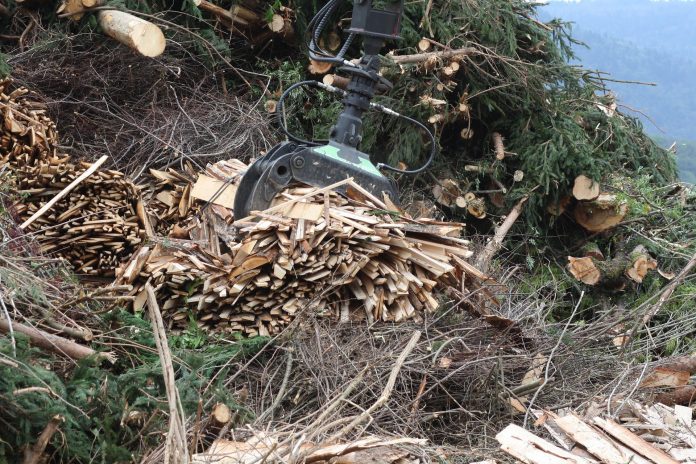Quick Bullets
- In 2021, biomass provided 5 percent of total primary energy use in the United States, with 2.1 percent of annual total energy consumption coming from wood-based biomass fuel.
- Quality wood pellets with low moisture content have only about half as much energy content as an equivalent amount of coal (by mass).
- Biomass power plants emit 50 to 85 percent more carbon dioxide than modern coal plants, and more than three times as much carbon dioxide as natural gas-fueled power plants.
- Bioenergy currently constitutes 10 percent of the world’s total energy supply.
- It can take 44 to 104 years to offset carbon dioxide emissions from burning biomass.
Introduction
Biomass is considered a renewable organic material that can be burned for energy. Main sources are wood and leftover waste from wood processing, some crops and crop waste, garbage like paper and yard waste, and animal and human manure. The U.S. Energy Information Administration (EIA) groups biofuels, which were discussed separately in a previous policy document, under the umbrella of biomass.
The focus of this analysis will be largely on wood-based biomass, especially what the EIA defines as densified biomass fuel—which consists of compressed and dried wood pellets and similar products. Wood-based biomass fuel is the largest single source of solid biomass energy in the United States. Energy from municipal solid waste products accounted for only 8.9 percent of total biomass energy in the United States in 2021. Other countries, like Japan and several European nations, use more municipal solid waste in their energy mix.
Densified biomass fuel is often promoted as a “green” replacement for coal in power plants. This is particularly true in Europe; the European Union (EU) is the world’s largest producer of wood pellets, constituting 46 percent of the world’s total production. The United Kingdom is the world’s largest consumer of wood pellets, burning 21 percent of the global supply. Of that portion, 75 percent are imported from the United States. The United States is a net exporter of wood pellet fuel, with most pellets primarily produced from pellet manufacturing facilities in the American South, according to EIA data. The wood consists of a variety of feedstocks, including leftovers from sawmills and timber logging, as well as a substantial portion from virgin forests.
Energy Content
Wood pellets have a much lower energy density, or the amount of energy stored per unit of volume, compared to fossil fuels. “House coal” has an energy density by volume of 23 to 26 thousand megajoules (MJ) per cubic meter, while wood pellets contain only 11 thousand MJ per cubic meter. Compared to good quality anthracite, like that mined in Pennsylvania, wood pellets fall even further behind. It takes twice as much wood-based biomass fuel to produce the same amount of energy as coal.
Manufacturing the wood pellets themselves also uses energy and other resources, and produces carbon dioxide emissions. While all energy resources need to be processed in some way, kiln-fired pellet drying processes can require energy input that is more than half of the biomass’ potential embedded energy.
Emissions
The U.S. Environmental Protection Agency (EPA) and the European Commission (EC) do not measure carbon dioxide emissions from power plants that burn wood-based biomass fuel. This is because, according to the Intergovernmental Panel on Climate Change (IPCC), there is a net-zero impact. Because growing new trees equivalent to the amount burned removes the same amount of CO2 emitted, this supposedly makes the use of biomass net-zero. However, this accounting method has come under scrutiny, in part because CO2 uptake is dependent on the kind of trees or brush that occupy the land, and how long they are left to grow. Any carbon dioxide emitted from burned biomass takes decades to be removed, and even then, only if the replanted biomass is not harvested before it has removed an equivalent amount of CO2.
With current technology, the processing and combustion of wood pellets for energy is less efficient than coal, and requires more material input for the same amount of energy produced. Replacing coal with wood bioenergy would likely increase short-term CO2 emissions. One study focusing on replacing coal with biofuel says that the designation of wood-based bioenergy as carbon neutral by world governments is “not valid because it ignores the transient, but decades to centuries long, increase in CO2 caused by biofuels.”
For the full report, click here.
For more on biomass, click here.
For more on renewables, click here.


























